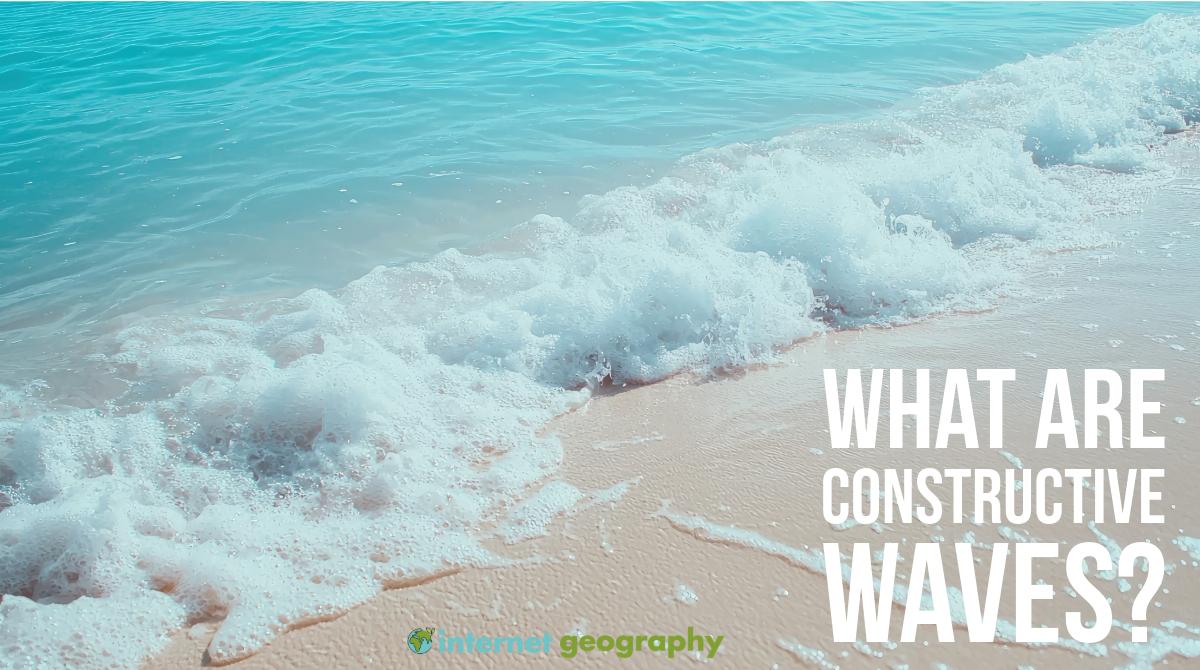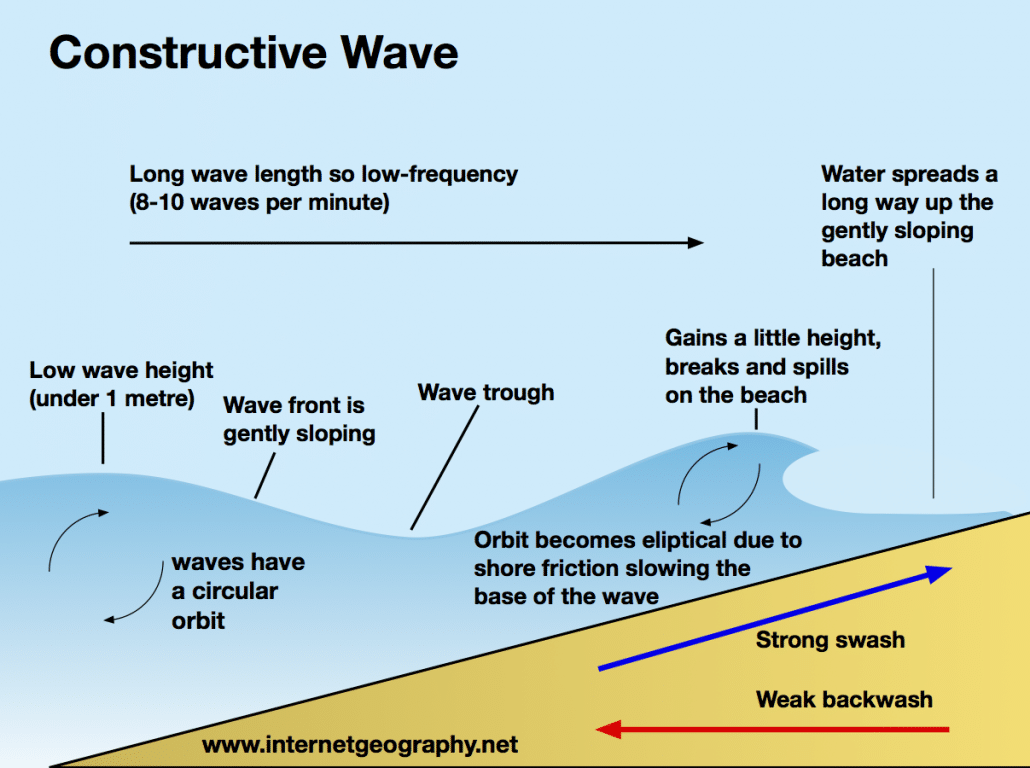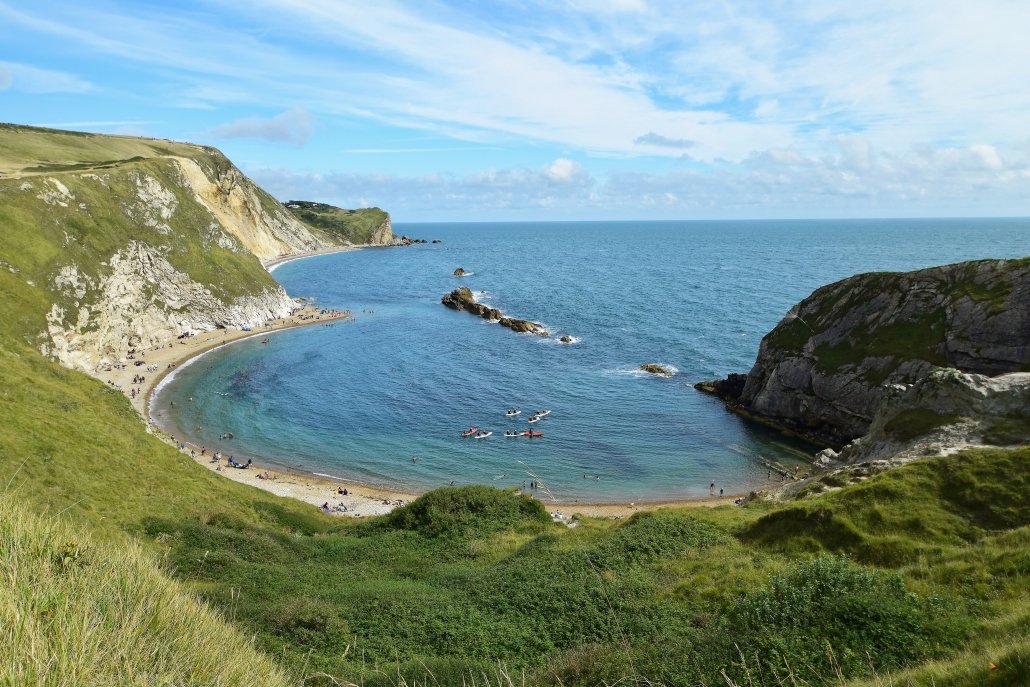What are constructive waves?
Constructive waves build beaches. These waves are more common in summer than in winter. Constructive waves predominate in calmer weather conditions when less energy is transferred to the water. Each wave is low. As the wave breaks, it carries material up the beach in its swash. Beach material is deposited as the backwash soaks into the sand or slowly drains away. When the next wave breaks, its swash will deposit more material without it being ‘captured’ by the backwash of the preceding wave.
Constructive waves have a long wavelength and a low frequency (8–10 waves per minute). They are low and typically under one metre in height. The wavefront is gently sloping and gains a little height. The wave breaks and spills onto the beach, and water spreads a long way up the gently sloping beach.
Constructive waves are typically found in sheltered bays and spits, building up sandy beaches. The image below shows a sandy beach formed in Man of War Bay on the Dorset coast.
The video below shows constructive waves at Mappleton, Holderness Coast.



